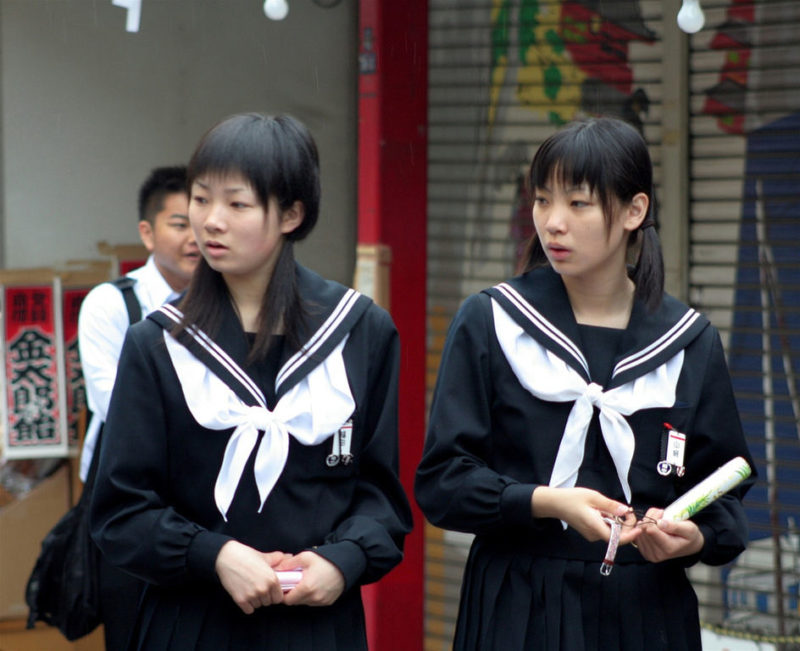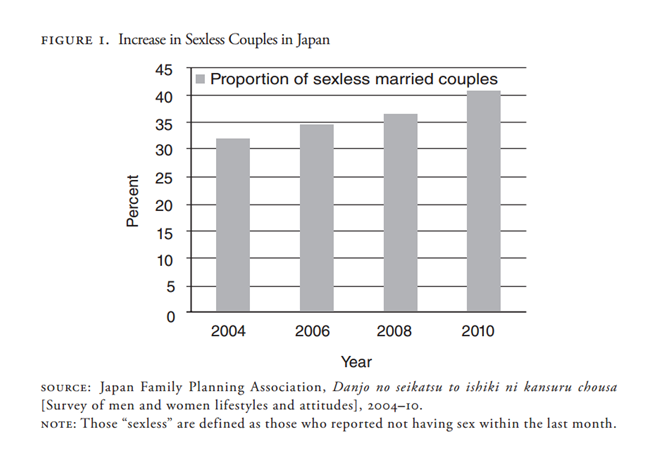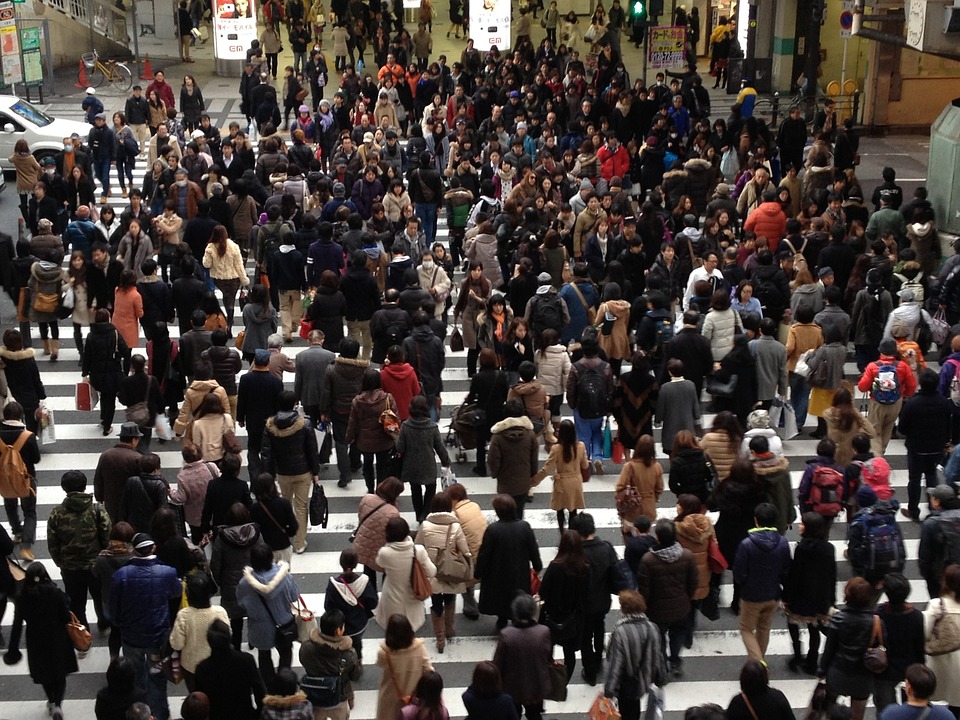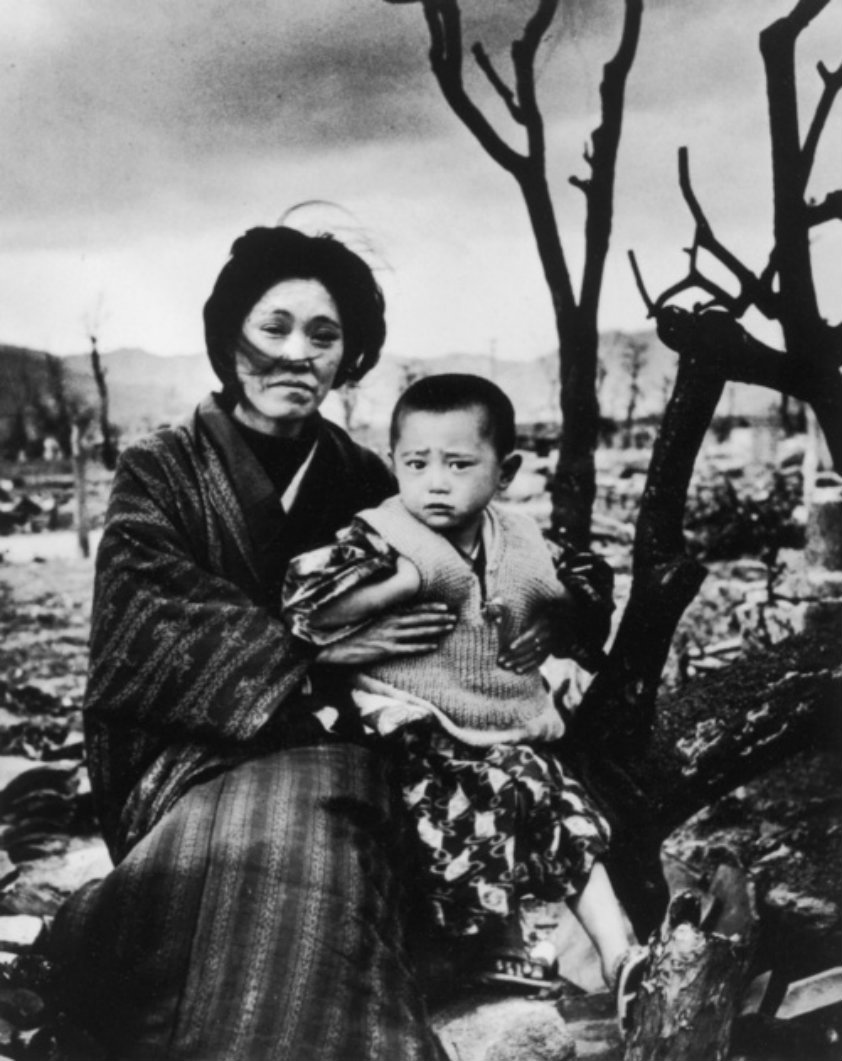 As of 2016, more Japanese women had jobs than American women. 74.3% vs. 76.3% (Shambaugh, 2017). For the longest time, Japanese women trailed in employment compared to their American counterparts. Much of this had to do with Japanese culture. Japan’s society expects women to spend their time at home once children enter the picture.
As of 2016, more Japanese women had jobs than American women. 74.3% vs. 76.3% (Shambaugh, 2017). For the longest time, Japanese women trailed in employment compared to their American counterparts. Much of this had to do with Japanese culture. Japan’s society expects women to spend their time at home once children enter the picture.
Women often have to choose between career and motherhood. But the increase in employment doesn’t mean this trend has reversed. More Japanese women work part-time and non-regular jobs in Japan than in the US (Shambaugh, 2017). So while women have made strides, cultural expectations still keep women from taking on more full-time work.
Japan’s military has also expanded the number of female soldiers up to 6% of the military with a goal of 9%. This lags behind the US (15%) and Britain (10%), and demographics pushes the move. Japan’s falling birth rates has created a crunch. There just isn’t enough men around to, well, man warships and other military posts (Kelly, 2018).
The changes haven’t been entirely smooth. Women in the military, as in the rest of Japan’s business society, face sexual harassment. According to Kelly (2018), the navy discharged a male petty officer in July for kissing and groping 3 women sailors over several months.
Women sailors have their own segregated quarters with special pager-locks. The navy believes improving the quarter conditions may help it find recruits. As of now, it struggles to find people interested in serving at sea. Most go to land and air forces. However, women on warships has led to some positive changes. Command Master Chief Yasuharu Tohno reports more cleaniness–regularly shaving and regularly ironing clothes–since women began serving (Kelly, 2018).

Despite these improvements in female status, Japanese women still face many challenges. According to a British research firm, 70% of Japanese women report their country lacks equality. Linda Hasunuma, a professor at the University of Bridgeport, explains (Foster, 2018):
“Women are primarily seen as wives and mothers and daughters-in-law, caregivers in the domestic sphere,”[…]“It’s changing, and more of them are in the workforce and in positions of management and leadership, but if you look at the media, if you look at families and society and culture, it perpetuates ideas about what is a woman’s proper role: being feminine and nurturing.”
The values passed down from the Tokugawa period and beyond continue to hang on. In a global survey of women in parliaments, Japan ranked 123rd out of 189 countries, according to an article in The Economist. While more women are working than in the United States, they struggle to find representation in government and break out of the cultural norms assigned to them. From the military to private life, Japanese women also continue to deal with sexual harassment problems in the workplace in life in general.
According to a 2014 survey in Japan, only 4.3% of the 117 female respondents who were forced for perform a sexual act reported the event to the police (Ito, 2018). When Shiori Ito, a Japanese journalist, spoke about her rape, she received online threats and more (Ito, 2018):
Ito was savaged online after making the accusation public, with people calling her a “prostitute” and one person even suggesting that she “should have been strangled and killed (during the alleged attack).”
The comments that affected her the most, however, appeared to have been sent by other women:
“I was told that I didn’t behave as a woman should behave: I was going out and drinking with a man or I was wearing the wrong clothes,” Ito says. “I was told what goes around comes around and yet I’m talking about sexual violence, not women’s manners.”
People see women as “asking for it” by going out for a drink, wearing suggestive clothing, or acting provocatively. Silence is sometimes interpreted as consent in Japan and often isn’t considered a continuous decision– “…consent has to continue–any agreement to engage in sexual activity ends as soon as a person changes his or her mind (Ito, 2018).”‘ Just recently in Ireland, a rape trial focused on how the victim dressed. The defense lawyer urged the jury to consider the underwear worn by the 17-year-old woman when a 27-year-old man raped her: “You have to look at the way she was dressed. She was wearing a thong with a lace front.” The jury acquitted the man (Safronova, 2018).
As Ito discovered, much of the pressure in Japan comes from other Japanese women. I’ve heard women in my area of the US accuse victims of asking for it by dressing “like a slut.” Anecdotes do not a trend make. However, I suspect some of this backlash comes from women who believe in firm gender roles–women stay home; men work. This split has deep ties in Japanese culture, and they solidified during the Tokugawa period. During this time, women didn’t legally exist. Her place was at home, and society expected her to submit to men in three ways (Cooper, 2013):
- When young, she submits to her father.
- When married, she submits to her husband.
- When old, she submits to her sons.
Although the Meiji Restoration during the late 1800s gave rights to women and the changes after WWII expanded them, culture changes more slowly. These submissions extend to the idea of consent. After all, women had no true consent until after World War II and the writing of Japan’s Constitution. Ireland suggests Western cultures wrestle with the idea despite about 300 years of Enlightenment principles. Japan has embraced those same principles only about 120 years ago. If the West still struggles against old cultural norms–dating back to the Medieval period and further–it stands to reason that Japan would still struggle considering the Tokugawa period ended 140 years ago. It sounds like a long time, but that is only three or four generations ago. It takes a long time for ideas to change across a population and even legally.
In June 2018, for the first time in 110 years, the law changed redefine rape from vaginal penetration by a penis to include forced anal and oral sex. This allowed men to be rape victims. Up until then, Japanese law didn’t recognize male rape as a possibility. The change in the law may allow prosecutors to improve the indictment rate of cases, and it would allow men to speak out. However, Japanese culture has a long running pressure to be silent and endure, another cultural legacy of history–going back to perhaps the Heian period. Both men and women feel this pressure, and this might be one reason why rape indictment rates in Japan are low. In 2014, only 37.2% cases led to an indictment. Cases involving children or strangers are easier to charge because consent is less of an issue than if the women know the men. Prosecutors often struggle to collect enough evidence.
Another issue women face, related to consent and workplace harassment, deals with clothes. Back in 2014, Kyoto expanded an existing ordinance that forbade filming and taking photos up the skirts of women–high school girls in particular. Phone and camera makers also responded by introducing loud shutter sounds that cannot be disabled. At least, they can’t be easily disabled. The push hit magazines that focused on upskirt photos and bought such photos (Johnston, 2014). Japan’s underwear fetish remains strong.

The change in the ordinance and the change in rape law mark strides in protecting women and men. However, as Ito’s experience suggests, the culture still places blame upon victims for encouraging their attackers. The same reasoning can apply to the upskirt photography–women should always wear shorts under their skirts. Such reasoning gives men a pass and absolving them from responsibility. Again, this returns to the idea of consent and of privacy. A skirt becomes consent just as the thong in the Ireland trial became consent. At the center of this sits the objectification of women. Honestly, I don’t find upskirt photography surprising (reprehensible but not surprising) because of how women and men appear in media as objects. Although Japan is more collectivistic than the US, they still have a strain of individualism that focuses on one’s own pleasure. This comes from a consumer society that pushes consumption.
More Japanese women work than American women. However, they don’t have the same options to work full-time or work into management as American women have. Japanese women are still expected to prioritize motherhood. Yet, this cultural focus hasn’t helped the declining population in Japan. Fewer women show an interest in relationships because they don’t want to choose between career and family. Many want both. Likewise men don’t want to work their lives away as expected when they have a family.
Despite the shortfalls, Japanese women have improved their standing and involvement in their society. They may soon become the primary drivers of the Japanese economy and moves of the culture. Likewise, American women stand to become the primary movers of politics and business.
References
Cooper, J. (2013). The Roles of Women, Animals, and Nature in Traditional Japanese and Western Folk Tales Carry Over into Modern Japanese and Western Culture .
Foster, Sarah (2018) Japanese politician fights for gender equality. Medill Reports Chicago http://news.medill.northwestern.edu/chicago/japanese-politician-fights-for-gender-equality/
Ito, Masami (2018) Shifting attitudes toward sexual violence in Japan. The Japan Times. https://www.japantimes.co.jp/news/2018/01/06/national/social-issues/shifting-attitudes-toward-sexual-violence-japan/#.WlOLhlQ-eiv
Kelly, Tim (2018) Japan’s omen sailors on frontline of gender quality. Reuters. https://widerimage.reuters.com/story/japans-women-sailors-on-frontline-of-gender-equality
Safronova, Valeriya (2018) Lawyer in Rape Trial Links Thong with Consent, and Ireland Erupts. The New York Times. https://www.nytimes.com/2018/11/15/world/europe/ireland-underwear-rape-case-protest.html
Shambaugh, Jay, et al (2017) Lessons from the rise of women’s labor force participation in Japan. Brookings. https://www.brookings.edu/research/lessons-from-the-rise-of-womens-labor-force-participation-in-japan/
Leading Photo: elmimmo [CC BY 2.0 (https://creativecommons.org/licenses/by/2.0)], via Wikimedia Commons





